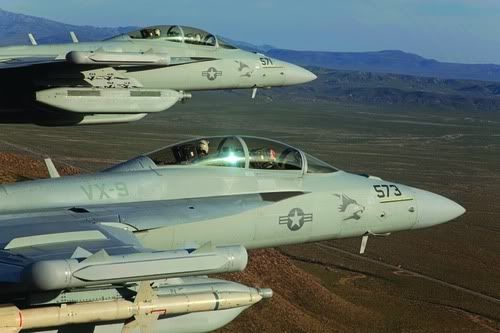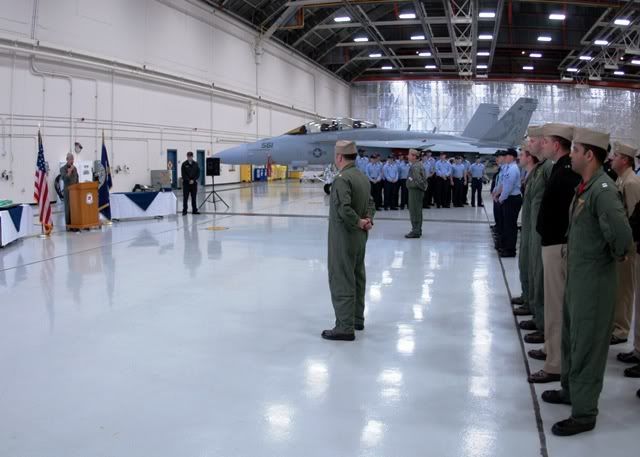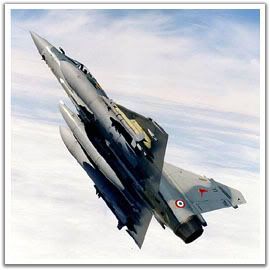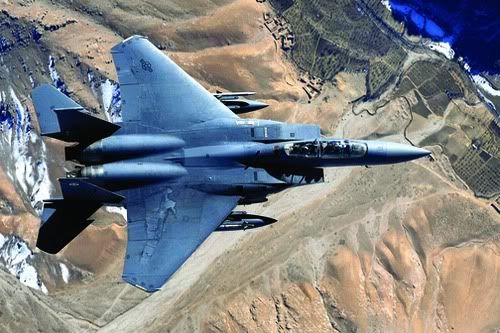The U.S. has been flying a classified, stealthy, remotely piloted aircraft in Afghanistan. That single fact reveals the continued development of low-observable UAVs, hidden aspects of the surveillance buildup in Afghanistan, the footprint of an active “black aircraft world” that stretches to Southwest Asia, and links into the Pentagon’s next-generation recce bomber.
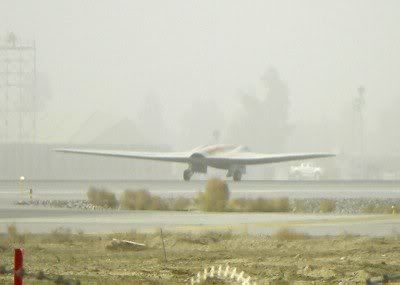
A new image of the Lockheed Martin RQ-170 stealth drone that has surfaced. (Ares/A Defense Technology Blog)
The mystery aircraft—once referred to as the Beast of Kandahar and now identified by the U.S. Air Force as a Lockheed Martin Skunk Works RQ-170 Sentinel—flew from Kandahar’s airport, where it was photographed at least twice in 2007. It shared a hangar with Predator and Reaper UAVs being used in combat operations. On Dec. 4, three days after declassification was requested, Aviation Week revealed the program on its web site. Like Predator and Reaper, the Sentinel is remotely piloted by aircrews—in this case the 30th Reconnaissance Sqdn. (RS) at Tonopah Test Range Airport in the northwest corner of the Nevada Test and Training Range.
The confirmation came the same week as the Air Force’s top intelligence, surveillance and reconnaissance (ISR) officer called for a new, stealth, jet-powered strike-reconnaissance aircraft that can meet the requirements of both irregular and conventional conflicts and strategic, peacetime information-gathering.
The demands of fighting an irregular war do not change the critical operational need for a stealthier, strategic-range, higher-payload, strike-reconnaissance aircraft, says Air Force Lt. Gen. Dave Deptula, deputy chief of staff for ISR.
The battle will be to balance the way the military wants to fight in Afghanistan now against how it wants to fight elsewhere in the future. Air Force officials want to keep those two needs from becoming widely divergent points in geography, technology and operational techniques. For the next 18 months, about 150,000 U.S. and allied troops will try to break the offensive capabilities of the Taliban and Al Qaeda in Afghanistan, and new technologies will be brought into play.
“Don’t get enamored with current conditions,” Deptula cautions. “We don’t know what the future will bring.” While operations in Afghanistan will be “more complex than ever,” the future is “not only going to be about irregular warfare.”
Beyond 2011, the Air Force’s first priority and the destination of the next dollar to be spent “if I were king for a day,” Deptula says, “would be for long-range [reconnaissance and] precision strike. That’s the number-one need.

“We cannot move into a future without a platform that allows [us] to project power long distances and to meet advanced threats in a fashion that gives us an advantage that no other nation has,” he notes. “We can’t walk away from that capability.”
A next-generation design would be equally important as a stealthy ISR platform to greatly extend—through speed, endurance and stealth—the capability produced by putting electro-optical and infrared sensor packets on the B-1 and B-52 bombers for precise attacks on fleeting targets in Southwest Asia.
Surveillance aircraft can see a lot more (farther and better) with long-wave infrared if the platform can operate at 50,000 ft. or higher. The RC-135S Cobra Ball, RC-135W Rivet Joint and E-8C Joint Stars are all limited to flying lower than 30,000 ft. Moreover, the multispectral technology to examine the chemical content of rocket plumes has been miniaturized to fit easily on a much smaller aircraft. Other sensors of interest are electronically scanned array radars, low-probability-of-intercept synthetic aperture radars and signals intelligence.
In fact, combat in Afghanistan could have—if well planned—direct benefits for conventional wars. The target set for the new surge campaign includes “cohesive units without chains of command” that the U.S. and its allies need to “dominate and win [against] across the spectrum” of conflict, Deptula says.
That then brings the focus back to what has been going on at Tonopah.
The 30th RS falls under Air Combat Command’s 432nd Wing at Creech AFB, Nev., home of the MQ-1 Predator and MQ-9 training and remote operations facilities. Tonopah is where classified projects—such as the F-117 fighter—are kept when they are still secret but have grown to a point where they cannot be easily accommodated at the Air Force’s “black” flight-test center at Groom Lake. Its operations are restricted by the need to prevent personnel cleared into any one program from observing other “sight-sensitive” test aircraft. The squadron was activated as part of the 57th Operations Group on Sept. 1, 2005, and a squadron patch was approved on July 17, 2007. The activation—although not the full meaning of the event—was noted among those who watch for signs of activity in the classified world.
The RQ-170 is a tailless flying wing design from Lockheed Martin’s Advanced Development Programs. It has a single engine and pronounced compound sweep on the leading and trailing edges. It is difficult to estimate the aircraft’s size, but one report suggests that the wingspan is similar to that of the Reaper at 66 ft. The high degree of blending and center-body depth would suggest a greater takeoff weight and thrust than the RQ-3 DarkStar, Lockheed Martin’s earlier stealth UAV, which was powered by a 1,900-lb.-thrust Williams FJ44 engine and weighed 8,500 lb.
A number of features suggest that the RQ-170 is a moderately stealthy design, without the DarkStar’s or Northrop Grumman X-47B’s extreme emphasis on low radar cross section (RCS). The leading edges do not appear to be sharp—normally considered essential for avoiding strong RCS glints—and it appears that the main landing gear door’s front and rear edges are squared off rather than being notched or aligned with the wing edges.
In addition, the exhaust is not shielded by the wing, and the wing is curved rather than angular. That suggests the Sentinel has been designed to avoid the use of highly sensitive technologies. As a single-engine UAV, vehicle losses are a statistical certainty. Ultra-stealthy UAVs—such as the never-completed Lockheed-Boeing Quartz for which DarkStar was originally a demonstrator—were criticized on the grounds they were “pearls too precious to wear”—because their use would be too restricted by the risk of compromising technology in the event of a loss.
The medium-gray color, similar to the Reaper’s, is a clue to performance. At extreme altitudes (above 60,000 ft.), very dark tones provide the best concealment even in daylight because there is little lighting behind the vehicle while it is illuminated by light scattered from moisture and particles in the air below it. The RQ-170 is therefore a mid-altitude platform, unlikely to operate much above 50,000 ft. This altitude also would have simplified the use of an off-the-shelf engine. General Electric has been working on a classified variant of its TF34 engine that appears to fit the thrust range of the RQ-170.
The overwing housings for sensors or antennas are also significant. One could accommodate a satcom antenna; but if both housed sensors, they would cover the entire hemisphere above the aircraft.
An Air Force official tells Aviation Week that the service has been “developing a stealthy, unmanned aircraft system [UAS] to provide reconnaissance and surveillance support to forward-deployed combat forces.
“The fielding of the RQ-170 aligns with Defense Secretary Robert M. Gates’s request for increased . . . ISR support to the Combatant Commanders and Air Force Chief of Staff Gen. Norton Schwartz’s vision for an increased USAF reliance on unmanned aircraft,” says the memorandum prepared for Aviation Week by the Air Force.
The RQ-170 designation is a correct prefix but numerically out of sequence to avoid obvious guesses of the program’s existence. Technically, “RQ” denotes an unarmed aircraft rather than the MQ prefix applied to the armed Predator and Reaper. A phrase in the memorandum, “support to forward-deployed combat forces,” when combined with visible details that suggest a moderate degree of stealth (including a blunt leading edge, simple nozzle and overwing sensor pods), suggests that the Sentinel is a tactical, operations-oriented platform and not a strategic intelligence-gathering design.
With its moderately low-observable design, the aircraft would be useful for flying along the borders of Iran and peering into China, India and Pakistan to gather useful information about missile tests and telemetry, as well as garnering signals and multispectral intelligence.
The RQ-170 has links to earlier Skunk Works designs such as the experimental DarkStar and Polecat. “DarkStar didn’t die when Lockheed Martin [retired the airframe],” said a former company executive last week. “It just got classified.”
Following the landing of a damaged Navy EP-3E in China in early 2001, then-Defense Secretary Donald Rumsfeld called a classified, all-day session of those with responsibilities for “sensitive reconnaissance operations” (AW&ST June 4, 2001, p. 30). They discussed how to avoid embarrassing and damaging losses of classified equipment, documents or aircrews without losing the ability to monitor the military forces and capabilities of important nations such as China. Their leading option was to start a new stealthy, unmanned reconnaissance program that would field 12-24 aircraft. Air Combat Command, which was then led by Gen. John Jumper, wanted a very-low-observable, high-altitude UAV that could penetrate air defense, fly 1,000 nm. to a target, loiter for 8 hr. and return to base.
During the invasion of Iraq in 2003, a UAV described as a derivative of DarkStar was being prepared and was said by several officials to have been used operationally in prototype form (AW&ST Mar. 15, 2004, p. 35; July 7, 2003, p. 20).
“It’s the same concept as DarkStar; it’s stealthy and it uses the same apertures and data links,” said an Air Force official at the time. “Only it’s bigger,” said a Navy official. “It’s still far from a production aircraft, but the Air Force wanted to go ahead and get it out there.” The classified UAV’s operation caused consternation among U-2 pilots who noticed high-flying aircraft operating within several miles of their routes over Iraq. Flights of the mysterious aircraft were not coordinated with those of other manned and unmanned surveillance units.
There is great interest in how the U.S. now leverages its black- and white-world UAVs and remotely piloted aircraft to maintain a watch over the vast and rugged areas of Afghanistan that NATO’s force of about 100,000 troops will be unable to patrol. The revitalized conflict in Afghanistan will be largely a ground war with airpower serving as flying artillery and as a wide-ranging reconnaissance force.
Emphasis will be attached to manned MC-12W and unmanned surveillance and light-attack aircraft. New technologies such as the Gorgon Stare ISR pod will address ground commanders’ insatiable desire for full-motion video. By next spring, a single pod on a UAV could track 13 separate people as they leave a meeting place. The capability will expand to 65 people by 2012 and eventually to perhaps as many as 150 image feeds from a single UAV combat air patrol.
Along with its new ISR products, the U.S. will be providing close air support and helicopter airlift to its allies.
“I don’t know exactly when the NATO forces or non-U.S. forces will be flowing,” says Gates. “We do have some private commitments. There will be some additional announcements, I expect, [after the] London conference in January on Afghanistan.”
The rough plan so far is to divide operational responsibilities between the allies in the north and west and the U.S. in the east and south. The allies are expected to total “a brigade or two” comprising about 3,500-4,000 troops each, says Gates. Training of the Afghan troops will focus on partnering in combat with international personnel, rather than on basic training.
With Guy Norris in Los Angeles.
Illustration by Gregory Lewis/AW&ST & Picture posted by Bill Sweetman
Source: Aviation Week
